Introduction To Product Launching Email

Launching a new product requires strategic communication, and a well-crafted product launching email plays a crucial role in this process.
Personalized emails can significantly enhance engagement and conversion rates by addressing the unique needs and preferences of your target audience.
In this blog post, we will explore the essentials of a product launching email, focusing on how personalized emails can make a difference.
What is a Product Launching Email?

A product launching email is a targeted message sent to inform your audience about a new product.
It aims to generate excitement, provide key details, and encourage early engagement or purchases.
Importance of Product Launching Emails
Product launching emails are a crucial component of any marketing strategy.
They serve multiple purposes, from building anticipation to enhancing brand awareness and providing direct communication.
Let's explore these aspects in detail.
1. Building Anticipation
Creating excitement before a product launch is vital for its success, and a well-executed product launch email campaign is perfect for this purpose as it generates buzz and curiosity among your audience.
- Teaser Campaigns: Sending out teasers about the upcoming product can pique interest. For example, a series of emails that gradually reveal features can keep your audience engaged.
- Early Access Invitations: Offering exclusive early access or pre-order options can increase engagement. According to MarketingSherpa, early access emails can boost engagement rates by 22%.
2. Direct Communication
Direct communication through emails ensures that your message reaches your audience effectively.
Personalized emails play a significant role in this, making all the details of communication more relevant and impactful.
- Targeted Messaging: Personalized emails tailored to the recipient’s preferences have higher open and click-through rates. For instance, personalized emails have a 29% higher open rate and a 41% higher click-through rate (Campaign Monitor).
- Clear and Direct Information: Emails provide a platform to deliver detailed information about the product, launch date, and benefits directly to your audience.
3. Brand Awareness
Product launching emails also help in enhancing brand awareness.
By consistently communicating with your audience, you reinforce your brand's presence and credibility.
- Consistent Branding: Each email is an opportunity to showcase your brand’s voice and style. This consistency helps in building a strong brand identity.
- Social Proof and Testimonials: Including testimonials from beta testers or early adopters can enhance credibility. Social proof is a powerful tool; according to Nielsen, 92% of consumers trust recommendations from others over branded content.
4. Highlighting Key Features
One of the main objectives of a product launching email is to showcase the new product’s features.
This helps potential customers understand what sets your newly launched product apart from others in the market.
A great product launch email example would showcase these features in a compelling way, inviting customers to explore the new product.
- Innovative Design: Emphasize any unique design elements that differentiate your product. For example, highlighting an ergonomic design that enhances user comfort can be a major selling point.
- Enhanced Performance: Detail any improvements or advanced features. If your product has a faster processing speed or longer battery life, make sure to spotlight these benefits.
- Exclusive Offers: Offering exclusive early access or special discounts can entice customers to take immediate action.
- According to Experian, personalized offers in emails can increase transaction rates by 6x.
5. Driving Sales
Product launching emails are crucial for driving sales, especially in the initial phase of the product release.
They create a sense of urgency and provide a clear path for purchase.
- Clear Call to Action (CTA): A prominent and compelling CTA such as "Buy Now" or "Pre-order Today" encourages immediate action. Emails with a single, clear CTA can increase clicks by 371% and sales by 161% (WordStream).
- Limited-Time Offers: Highlighting time-sensitive promotions can boost conversions. For example, a “24-hour flash sale” can create urgency and prompt quicker decisions.
6. Customer Engagement
Engaging with customers through product launching emails can build a loyal customer base and enhance brand loyalty.
You can also draw inspiration from how other companies craft their own product launch emails to engage their audience effectively.
- Personalized Content: Addressing customers by their names and tailoring the email content to their preferences can significantly boost engagement. Personalized emails have a 29% higher open rate and a 41% higher click-through rate (Campaign Monitor).
- Feedback Requests: Encourage recipients to share their thoughts or experiences with the new product. This not only engages them but also provides valuable insights for future improvements.
7. Educating Customers
A well-crafted product launching email serves to educate customers about the new product.
This helps them understand its benefits and how it meets their needs.
- Detailed Product Information: Provide a comprehensive overview of the product’s features and benefits. Explain how these features solve common problems or improve the customer’s experience.
- Usage Tips and Guides: Include tips on how to use the product effectively. For instance, if you are launching a new software, share a brief tutorial or a link to a demo video.
8. Generating Buzz
Generating buzz before and during the product launch is crucial for its success. Product launching emails are an effective way to create excitement and anticipation.
- Teaser Campaigns: Start with teaser emails that gradually reveal more information about the product. This builds curiosity and keeps your audience engaged.
- Social Proof: Share testimonials or early reviews from beta testers to build credibility and excitement.
- According to Nielsen, 92% of consumers trust recommendations from others over branded content.
9. Feedback Collection
Collecting feedback is essential for refining the product and understanding customer needs.
Product launching emails can be an excellent tool for this purpose.
- Surveys and Feedback Forms: Include links to surveys or feedback forms in your emails. Encourage recipients to share their thoughts and experiences.
- Incentives for Feedback: Offer incentives like discounts or exclusive access to encourage more responses. This can increase the rate of feedback collection significantly.
10. Creating Urgency
Creating a sense of urgency create anticipation can drive immediate action and boost sales during the product launch.
- Limited-Time Offers: Highlight time-sensitive promotions or discounts. For example, “Get 20% off if you order within the next 24 hours” can prompt quick decisions.
- Early Access Invitations: Offering early access or pre-order options creates exclusivity and urgency. According to HubSpot, emails with a limited-time offer generate higher engagement rates.
Types of Product Launch Emails
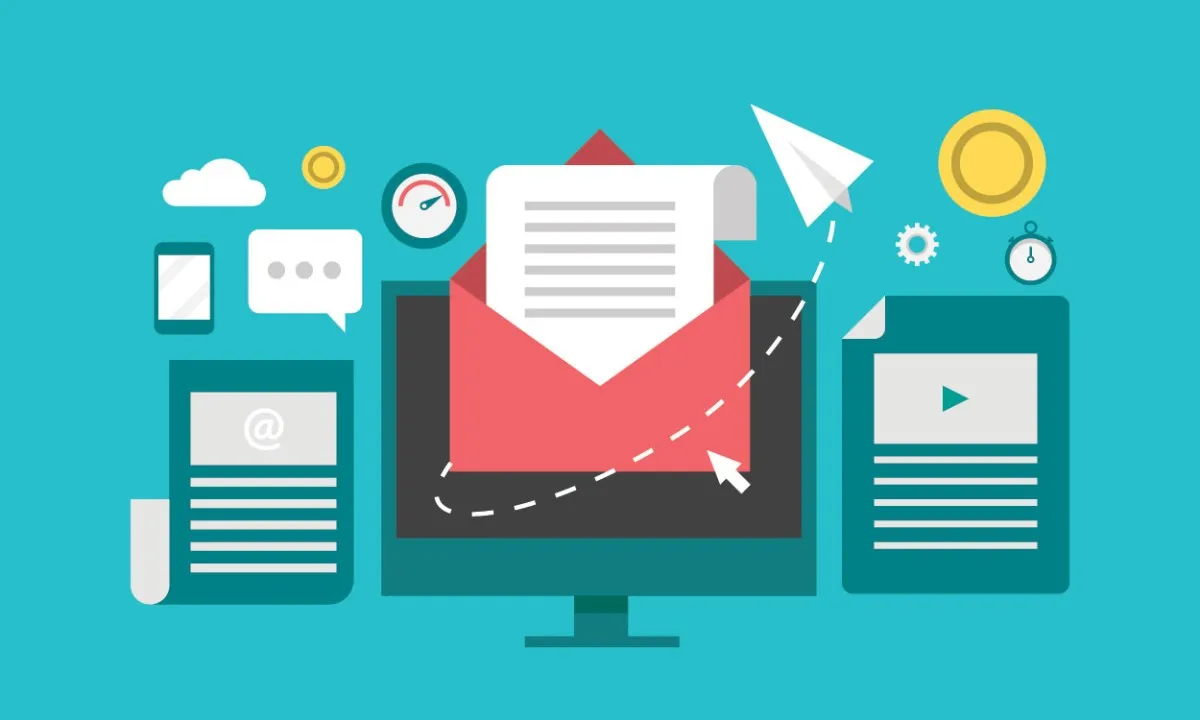
Effective product launch email campaigns use various types of emails to engage and inform the audience.
Each type serves a specific purpose, from building anticipation to providing key information.
Here, we explore different types of product launch emails with examples to illustrate their impact.
1. Pre-launch Email
A pre-launch email is sent before the official product launch to build anticipation and inform your audience about what’s coming.
Using a product launch email template can help streamline the process and ensure all key elements are included.
Example: “Get Ready for Our Biggest Innovation Yet!”
- Build Anticipation: “We’re thrilled to announce that something exciting is coming your way. Stay tuned for the big reveal!”
- Sneak Peek: “Here’s a glimpse of what’s to come. Our new product features advanced technology and a sleek design.”
2. Pre-order Announcement Email
A pre-order announcement email allows customers to purchase the product before its official release. This creates a sense of exclusivity and urgency.
Example: "Pre-order Now and Be the First to Experience Innovation"
- Exclusive Early Access: "Pre-order our latest product now and enjoy exclusive early access before anyone else."
- Special Offers: "Get a 10% discount on pre-orders placed within the next 48 hours. Don’t miss out!"
3. New Product Launch Day Email
The launch day email is sent on the day of the product release, providing all the essential information and encouraging immediate purchases.
Example: "Introducing Our Newest Product – Available Now!"
- Key Features and Benefits: "Our new product offers unparalleled performance and cutting-edge features designed to enhance your experience."
- Clear CTA: "Order now and be among the first to own our innovative new product. Click here to buy now."
4. Beta Test Launch Email
A beta test launch email invites a select group of customers to test the product before its official release.
This helps gather valuable feedback and builds a community of engaged users.
Example: "Join Our Exclusive Beta Test Program"
- Invitation to Participate: "We’re looking for a select group of users to join our beta test program. Be the first to try our new product and provide your valuable feedback."
- Incentives: "Participants will receive a special discount on the final product and early access to future updates."
5. New Feature Announcement Email
A new product feature or announcement email informs customers about updates or new features added to an existing product.
This keeps your audience engaged and informed.
Example: "Exciting New Features Added to Your Favorite Product"
- Highlight New Features: "We’ve added some amazing new features based on your feedback. Enjoy enhanced performance and new functionalities."
- Encourage Usage: "Update your product now to experience these new features. Click here to learn more."
10 Product Launch Email Sequence Templates

1. Teaser Email
A teaser email is sent to build anticipation and curiosity about the upcoming product launch. It gives a sneak peek without revealing too much, creating excitement among the target audience.
According to Campaign Monitor, teaser emails can increase open rates by 40%.
Template:
2. Announcement Email
The announcement email officially informs your audience about the product launch date and key features.
It provides all the essential information, ensuring your potential customers are aware and prepared for the upcoming release.
This pre launch email template also has email templates that helps in setting the stage for the product launch.
Template:
3. Early Access Email
An early access email offers select customers the opportunity to purchase or try the product before its official launch.
This creates a sense of exclusivity and urgency, boosting engagement and pre-orders.
According to HubSpot, early access emails can lead to a 20% increase in sales.
Template:
4. Pre-Order Email
A pre-order email allows customers to purchase the product before its official launch.
This email builds anticipation and offers exclusive early access, creating urgency and boosting early sales.
Pre-order emails can significantly increase conversion rates, with studies showing a 30% higher sales volume during the pre-order phase.
Template:
5. Launch Date Email
The launch date email reminds your audience of the official release date. It includes essential information about the product launch, ensuring customers are ready and aware.
This email is crucial for maximizing initial engagement and sales on the product launch day, helping to create a successful product launch campaign.
Template:
6. Feature Highlight Email
A feature highlight email focuses on the key features and benefits of the new product.
It provides detailed information to educate customers and build interest.
According to MarketingSherpa, emails that highlight product features can increase click-through rates by 50%, driving more traffic to your product page.
Template:
7. Testimonial Email
A testimonial email includes reviews and feedback from early users or beta testers.
It provides social proof and builds credibility, encouraging potential customers to trust and purchase the new product.
According to Nielsen, 92% of consumers trust recommendations from others, making testimonials a powerful tool for driving conversions.
Template:
8. How-To Email
A how-to email offers step-by-step guidance on using the new product.
It educates customers on the product’s features and functionalities, enhancing user experience and satisfaction.
These emails can reduce customer support queries by 30%, as reported by the Harvard Business Review.
Template:
9. Feedback Request Email
A feedback request email asks customers to share their experiences and opinions about the new product.
This email helps in gathering valuable insights for future improvements and engages customers by making them feel valued. Engaging customers for feedback can lead to a 15% increase in customer loyalty.
Template:
10. Re-Engagement Email
A re-engagement email targets customers who haven’t interacted with your emails or product launch announcements.
It aims to rekindle their interest and bring them back into the sales funnel. Re-engagement campaigns can recover up to 12% of inactive subscribers, according to MarketingSherpa.
Template:
15 Examples of Effective Product Launch Emails

1. Apple
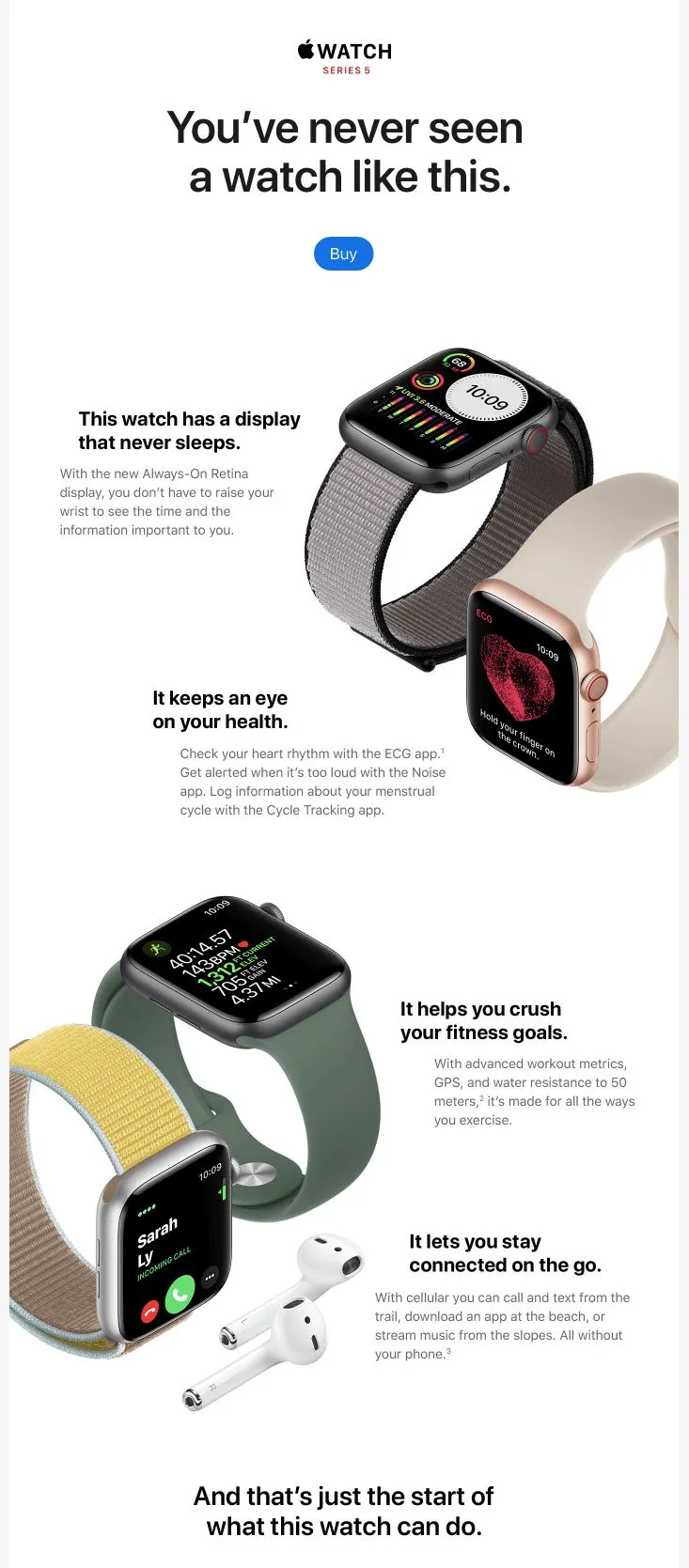
Apple's product launch emails are known for their simplicity and elegance.
They focus on highlighting key features and benefits of the new product, often using high-quality visuals and a clear call to action.
For example, the launch email for the iPhone X emphasized its innovative design and advanced technology, driving excitement and pre-orders.
Key Elements:
- Innovative Design: Showcased with stunning visuals.
- Clear Call to Action (CTA): Encouraged immediate pre-orders.
2. Tesla
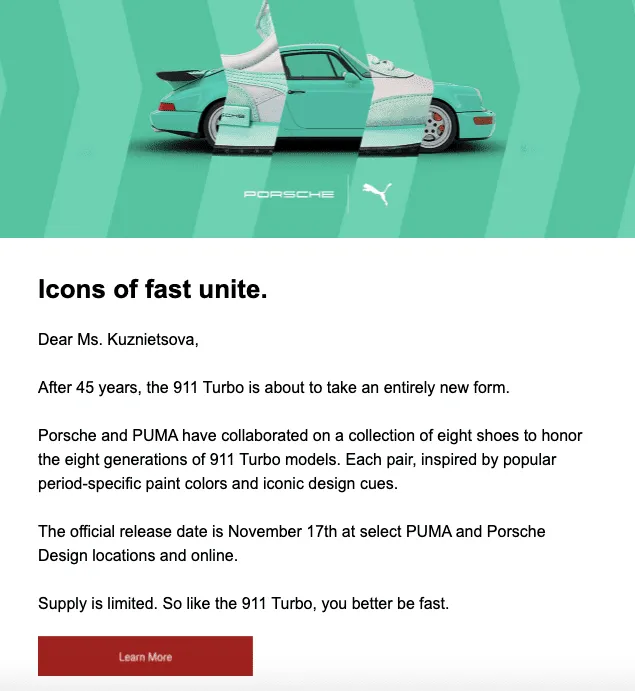
Tesla's product launch emails are highly anticipated, often featuring detailed information about new features and improvements.
Their emails effectively create urgency and excitement, particularly for limited releases like the Model 3 pre-order announcement.
Key Elements:
- Detailed Product Information: Highlighted innovative technology and performance.
- Exclusive Early Access: Early access invitations and pre-order options.
3. Nike
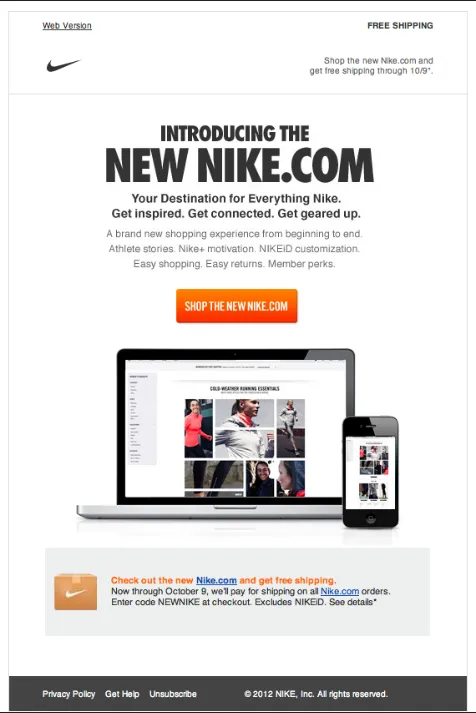
Nike uses product launch emails to generate buzz and highlight new collections.
Their emails often include compelling visuals, athlete endorsements, and exclusive early access offers to engage their audience and drive sales.
Key Elements:
- Social Proof: Featuring athlete endorsements.
- Engaging Visuals: High-quality images showcasing new products.
4. Amazon
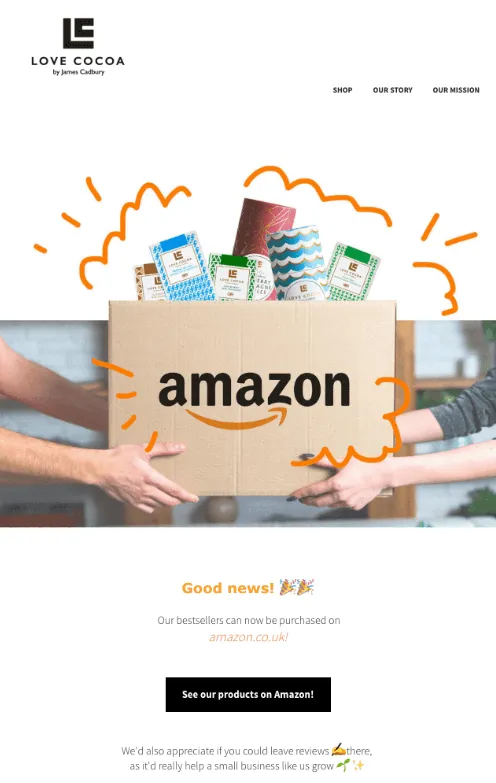
Amazon's product launch emails are data-driven and personalized, targeting specific customer segments with relevant offers.
Their launch emails for new devices like the Echo Dot emphasize user benefits and provide detailed usage scenarios.
Key Elements:
- Personalized Content: Tailored to customer preferences.
- Usage Scenarios: Demonstrating practical applications.
5. Google

Google's product launch emails, such as those for the Pixel phone, focus on highlighting new features and integrations with other Google services.
They use a mix of engaging visuals and clear explanations to inform and excite their audience.
Key Elements:
- Feature Highlights: Detailed descriptions of new functionalities.
- Clear Communication: Easy-to-understand explanations and visuals
6. Samsung

Samsung's product launch emails are designed to highlight key features and benefits of their new products. They often include high-quality visuals and a clear call to action.
For instance, a product launch email for a new Galaxy phone might emphasize its innovative design and advanced features.
Key Elements:
- Highlight Key Features: Detailed descriptions of the phone’s camera, battery life, and display.
- Clear Call to Action (CTA): Encourages pre-orders or immediate purchases.
7. Slack

Slack’s product launch emails focus on new functionalities and integrations with other tools.
They use clear and engaging communication to explain how these features enhance productivity and collaboration.
Key Elements:
- New Functionality Highlights: Descriptions of new integrations and features.
- Clear Communication: Easy-to-understand explanations of benefits.
8. Airbnb

Airbnb's product launch emails effectively generate buzz and highlight key features of new services.
For example, when launching "Experiences," Airbnb used compelling visuals and testimonials to engage their audience. These emails provided clear information about the benefits and how to book, driving high engagement rates.
Key Elements:
- Generate Buzz: Creating excitement with sneak peeks and teasers.
- Highlight Key Features: Detailed descriptions of new services.
9. Netflix
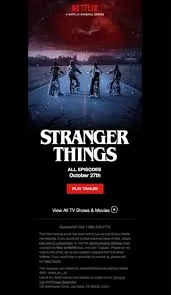
Netflix's product launch emails for new shows or features focus on creating anticipation and engaging subscribers.
They use high-quality visuals and personalized content to attract attention. For example, emails announcing a new series might include exclusive previews and behind-the-scenes content.
Key Elements:
- Personalized Content: Tailored recommendations based on user preferences.
- Clear Call to Action (CTA): Encouraging viewers to watch the new content.
10. Spotify

Spotify’s product launch emails, such as those for new features or playlists, emphasize user benefits and usage scenarios.
They often include testimonials and data-driven insights to build credibility and engage users.
Key Elements:
- New Feature Announcement: Highlighting new functionalities and benefits.
- Usage Scenarios: Practical examples of how to use the new features.
Key Elements of a Successful Product Launch Email
Creating a successful product launch email involves several critical elements that work together to engage your audience and drive conversions.
Let's break down these elements and how they contribute to an effective email campaign.
1. Subject Line
The subject line is the first thing your audience sees, and it must grab their attention immediately. A compelling subject line can significantly increase open rates. According to Campaign Monitor, emails with personalized subject lines are 26% more likely to be opened.
- Personalization: Use the recipient’s name or preferences.
- Urgency and Exclusivity: Phrases like "Limited Time" or "Exclusive Access".
2. Preheader Text
The preheader text provides a brief overview and summary of the email content and complements the subject line. It's crucial for encouraging recipients to open the email.
- Reinforce the Subject Line: Expand on the subject line to entice readers.
- Highlight Key Benefits: Mention what's inside, like exclusive offers or new features.
3. Introduction
The introduction should be engaging and set the tone for the rest of the email. It’s where you start to build anticipation for the product launch.
- Personalized Content: Address the recipient by name and connect with their interests.
- Build Anticipation: Use engaging language to create excitement.
4. Product Announcement
The product announcement is the core of the email. Clearly announce the launch sequence a brand new feature and product and why it’s important.
- Clear and Direct: State what the product is and its launch date.
- Benefit-Oriented: Explain how the product solves a problem or improves the user’s experience.
5. Key Features
Highlighting key features of the product helps the reader understand its unique value proposition and functionality. Use bullet points for clarity and impact.
- Bullet Points: List out the main features for easy readability.
- Highlight Benefits: Focus on how each feature benefits the user.
6. Benefits
Clearly outlining the benefits of the new full product range is crucial. This helps potential and existing customers to understand what value they will gain.
- Highlight Key Benefits: Focus on how the product solves problems or improves user experience.
- Use Data: Include relevant statistics or data to support your claims.
7. High-Quality Images
Using high-quality images can significantly enhance the visual appeal of your email. They help in showcasing the product attractively.
- Visual Appeal: Use professional, high-resolution images.
- Showcase Product: Display the product from multiple angles or in use.
8. Call to Action (CTA)
A clear and compelling call to action (CTA) is essential to guide recipients towards the desired action, such as making a purchase or signing up for more information.
- Clear and Direct: Use action-oriented language like "Buy Now" or "Learn More".
- Prominent Placement: Ensure the CTA stands out visually.
9. Customer Testimonials
Including customer testimonials provides social proof and builds trust. Testimonials can reassure potential buyers about the product’s quality and effectiveness.
- Real User Feedback: Use quotes from actual customers.
- Highlight Satisfaction: Focus on positive outcomes and experiences.
10. Exclusive Offer
An exclusive offer can create a sense of urgency and encourage immediate action. This could be a limited-time discount or a special bonus for early adopters.
- Urgency: Highlight the limited nature of the offer.
- Incentives: Provide attractive discounts or bonuses.
11. Social Proof
Social proof, such as user reviews and ratings, can significantly influence purchasing decisions. It shows that others have had positive experiences with the product.
- User Reviews: Include snippets of reviews and ratings.
- Credibility: Use verified and credible sources for testimonials.
12. Urgency
Creating a sense of urgency can prompt immediate action from your audience. Urgency can be achieved through time-sensitive offers or limited availability.
- Limited-Time Offers: Highlight special discounts or bonuses that expire soon.
- Scarcity: Indicate limited stock or exclusive access.
13. Personalization
Personalized emails are more likely to be opened and engaged with. Tailoring the content to the recipient’s preferences and past behaviors enhances relevance.
- Personalized Content: Use the recipient’s name and customize the message based on their interests.
- Behavioral Triggers: Send emails based on past purchases or browsing history.
14. Clear and Concise Copy
Effective product launch emails use clear and concise copy to convey the message quickly and effectively. Avoiding unnecessary jargon keeps the product launch email examples reader-friendly.
- Straightforward Language: Use simple, direct language to explain the product and its benefits.
- Bullet Points: Break down information into easy-to-read bullet points for better readability.
15. Contact Information
Including contact information ensures that recipients can easily reach out for more information or support. This builds trust and provides a direct communication channel.
- Accessible Details: Provide an email address, phone number, or direct links to customer support.
- Social Media Links: Include links to your social media profiles for additional engagement.
16. Unsubscribe Option
An unsubscribe option is not only a legal requirement but also helps maintain a healthy and engaged email list. It shows respect for the recipient’s preferences.
- Easy to Find: Place the unsubscribe link in a noticeable location.
- Clear Instructions: Ensure the process to unsubscribe is simple and straightforward.
Using all these elements in your product launch email can significantly enhance its effectiveness.
These elements help in creating engaging, relevant, and trustworthy emails that drive action and build strong customer relationships.
Tips for Writing a Compelling Product Launch Email

Creating a compelling product launch email involves several key strategies that can engage your audience and drive conversions. Here are some essential tips to ensure your email stands out.
1. Use an Engaging Preheader Text
The preheader text launch email example is a brief summary of previous email that appears after the subject line. It should complement the subject line and entice recipients to open the email.
- Highlight Key Benefits: Mention the most exciting feature or offer.
- Create Curiosity: Use intriguing language to encourage opens.
2. Start with an Exciting Introduction
The introduction sets the tone for the email and should immediately grab attention.
An engaging introduction can build anticipation and customers love and interest in the product.
- Personalized Content: Address the recipient by name and relate to their interests.
- Build Excitement: Use energetic and enthusiastic language.
3. Clearly Announce the Product
A clear and direct product announcement ensures that the recipient understands what the email is about. This is the core message of your email.
- Direct Statement: Clearly state the product name and launch date.
- Benefit-Oriented: Explain how the product can solve problems or improve experiences.
4. Highlight Key Features
Highlighting the key selling points and features helps the recipient understand the value of the product. Use bullet points to make this information easily digestible.
- Use Bullet Points: List the main features for quick reading.
- Focus on Uniqueness: Highlight what sets your product apart from competitors.
5. Focus on Benefits to the User
Focusing on the benefits rather than just the features makes the email more compelling. Explain how the product will improve the user's life.
- User-Centric Language: Talk about how the product solves specific problems.
- Include Data: Use statistics or testimonials to support your claims.
6. Include High-Quality Images or Videos
Visual content significantly enhances the appeal of your email.
High-quality images or videos can showcase your product effectively, making it more attractive to potential customers.
- Visual Appeal: Use professional, high-resolution images or engaging videos.
- Showcase Product: Highlight the product in use or from multiple angles.
7. Add a Strong Call to Action (CTA)
A clear and compelling call to action (CTA) guides recipients towards the desired action, such as making a purchase or signing up for more information.
- Clear and Direct: Use action-oriented language like "Buy Now" or "Learn More".
- Prominent Placement: Ensure the CTA stands out visually.
8. Provide Easy Access to Customer Support
Including contact information for customer support helps build trust and provides a direct line of communication for any questions or issues.
- Accessible Details: Provide an email address, phone number, or direct links to customer support.
- Social Media Links: Include links to your social media profiles for additional engagement.
9. Test and Optimize Your Email
Testing different versions of your email can help you determine what works best.
Optimization based on data can significantly improve performance.
- A/B Testing: Test different subject lines, CTAs, and designs to see what resonates most with your audience.
- Analyze Results: Use analytics to measure open rates, click-through rates, and conversions
10. Follow Up with Recipients
Following and follow up email with recipients keeps the momentum going and encourages further engagement.
It also provides an opportunity to address any questions or concerns.
- Timely Follow-Up: Send follow-up emails shortly after the initial launch.
- Additional Information: Provide more details, answer FAQs, or offer exclusive deals.
11. Use Engaging and Persuasive Language
Engaging and persuasive language can significantly enhance the effectiveness of your product launch email.
It captures the reader's attention and motivates them to take action.
- Active Voice: Use active voice to make your writing more dynamic and direct.
- Emotion and Urgency: Words that evoke emotions and urgency can increase engagement and drive conversions.
According to Copyblogger, emails with compelling copy can increase click-through rates by up to 50%.
12. Ensure Compliance with Email Marketing Regulations
Compliance with email marketing regulations is crucial to avoid penalties and ensure that your emails reach your audience's inboxes.
- CAN-SPAM Act: Follow the CAN-SPAM Act guidelines, which include having a clear unsubscribe option and avoiding misleading subject lines.
- GDPR Compliance: Ensure that your email practices are compliant with GDPR, particularly if you have subscribers in the EU. This includes obtaining explicit consent and providing a way to withdraw it.
According to HubSpot, 23% of emails never make it to the inbox due to non-compliance with regulations.
By using these tips you can create a compelling product launch email that drives engagement and avoids legal issues.
These strategies are essential for crafting effective and compliant emails.
Common Mistakes to Avoid While Writing Product Launch Email

Creating a product launch email that effectively engages and converts can be challenging.
Avoiding common mistakes is crucial to ensure your email stands out and achieves its purpose. Here are some pitfalls to watch out for.
1. Weak Subject Line
A weak subject line can lead to low open rates, as it fails to capture the recipient's attention.
According to Campaign Monitor, 47% of email recipients open emails based on the subject line alone.
- Engaging and Direct: Ensure your subject line is compelling and gives a clear indication of the email's content.
- Personalization: Include the recipient’s name or relevant details to make it more appealing.
2. Lack of Personalization
Emails that lack personalization feel generic and impersonal, reducing engagement.
Personalized emails have a 29% higher open rate and a 41% higher click-through rate (Campaign Monitor).
- Tailored Content: Use the recipient’s name and tailor the message to their interests and behaviors.
- Dynamic Content: Utilize data to customize the email content based on the recipient's preferences.
3. Overloading with Information
Providing too much information can overwhelm the recipient, leading to disengagement.
- Concise and Focused: Keep the content brief and to the point, focusing on the most important aspects.
- Bullet Points: Use bullet points to break down complex information into easily digestible parts.
4. Unclear Call to Action (CTA)
An unclear call to action (CTA) can confuse recipients and reduce conversion rates.
Emails with a single, clear CTA can increase clicks by 371% and sales by 161% (WordStream).
- Direct Language: Use clear, action-oriented language for your CTA.
- Visibility: Ensure the CTA button is prominent and easy to find.
5. Poor Quality Images
Using poor quality images can diminish the professional appearance of your email and reduce its effectiveness.
- High-Quality Visuals: Use professional, high-resolution images to enhance the visual appeal.
- Relevant Imagery: Ensure the images are relevant and add value to the content.
6. Ignoring Mobile Optimization
With over 50% of emails being opened on mobile devices (Litmus), ignoring mobile optimization can lead to poor user experience and reduced engagement.
- Responsive Design: Ensure your email design adapts to different screen sizes.
- Readable Text: Use a font size that is easy to read on mobile devices.
7. Ignoring Customer Benefits
Focusing solely on features without highlighting customer benefits can fail to connect with your audience.
Benefits explain how the product improves the user’s life, making it more relevant and compelling.
- User-Centric Content: Highlight how the product solves problems or enhances the user experience.
- Practical Examples: Use scenarios that show the product in action.
8. Too Much Technical Jargon
Overloading your email with technical jargon can confuse and alienate your audience.
Aim for clear and simple language to make your message accessible.
- Simplify Language: Explain technical terms in plain English.
- Focus on Clarity: Make sure your message is easy to understand.
9. No Sense of Urgency
Without a sense of urgency, recipients may not feel compelled to take immediate action.
Creating urgency can drive faster responses and higher conversion rates.
- Limited-Time Offers: Highlight time-sensitive promotions or discounts.
- Action-Oriented Language: Use phrases like "Act Now" or "Limited Time Only."
10. Forgetting Social Proof
Social proof, such as customer reviews and testimonials, builds trust and credibility.
Emails that lack social proof may struggle to convince recipients of the product's value.
- Include Testimonials: Share quotes from satisfied customers.
- Highlight Reviews: Use positive reviews to back up your claims.
Conclusion
Crafting an effective product launching email is essential for a successful product release.
By avoiding common mistakes such as ignoring mobile optimization, neglecting customer benefits, using too much technical jargon, lacking a sense of urgency, and forgetting social proof, you can create a compelling email that engages your audience and drives conversions.
Focus on personalization, clear calls to action, high-quality images, and customer testimonials to enhance your email's impact.
Remember, a well-crafted product launch email can significantly boost your product's success.

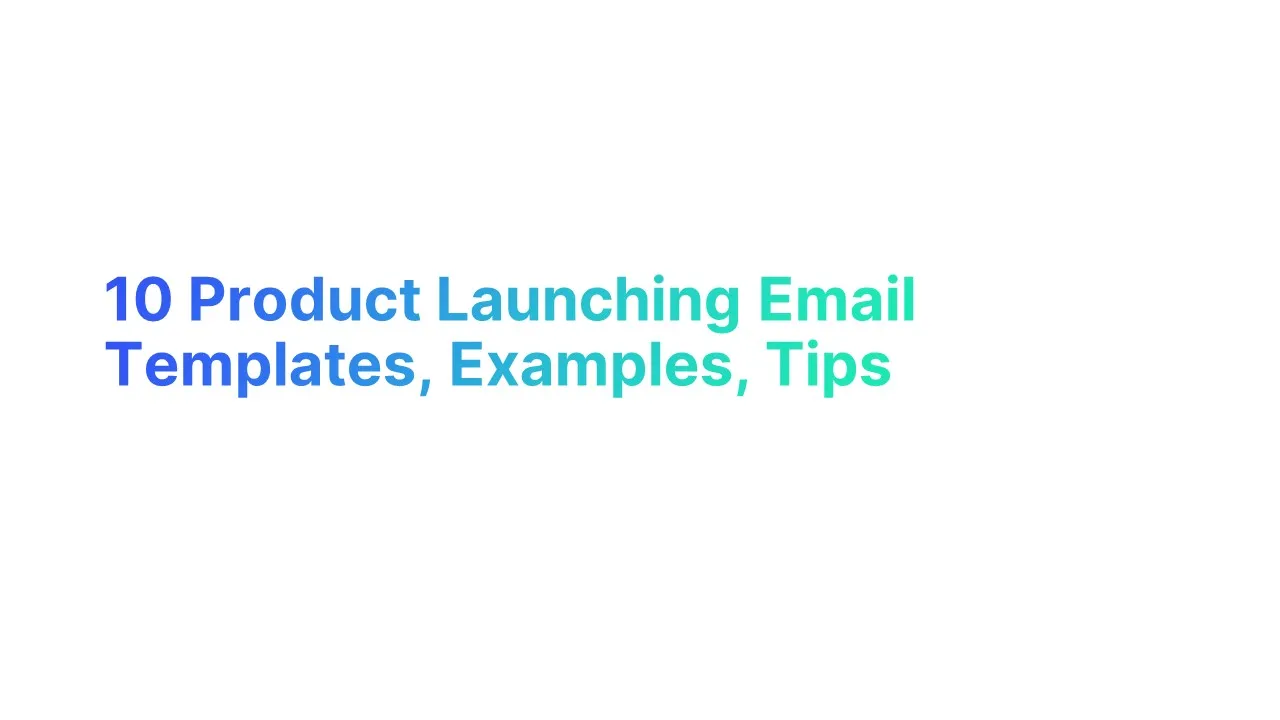



.jpg)

.jpg)
